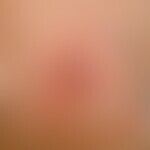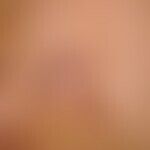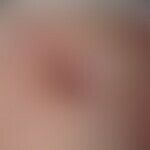Synonym(s)
Diamond lobe to Limberg; Rhomboid flap after Limberg; Rhomboid flap plastic
HistoryThis section has been translated automatically.
Limberg, 1946
DefinitionThis section has been translated automatically.
Transposition near flap of the skin to cover a diamond-shaped defect.
General informationThis section has been translated automatically.
- A triangular flap is incised on the long side of the diamond-shaped defect, the inner leg of which corresponds to an extension of the short diamond diameter by not exceeding an angle of 120° to the edge of the wound. The outer cut line runs parallel to the wound margin at an angle of 60°. The leg lengths should correspond to the dimensions of the defect side. After undermining the flap is transposed into the defect. This creates a "fire-hook-shaped" suture.
Notice! Round or oval skin defects can be reshaped into rhomboid by extended excision. The shape and cut of the flap must be planned in such a way that it can be swung into the defect without tension.
- Indication: Small tumor excisions in the forehead and temporal region, on the side of the nose, the eyebrow, the parotideomasseteric region (Fig. 1 a, b) and on the back of the hand. Larger excisions in the shoulder or lumbar region (Fig. 2 a, b).
LiteratureThis section has been translated automatically.
- Holle J (1994) Plastic surgery. Hippocrates, Stuttgart
- Limberg AA (1966) Design of local flaps. Mod Trends Plast Surg 2: 38-61 Petres J, Rompel R, Robins P (1996) Dermatologic surgery. Textbook and atlas. Springer, New York Berlin Heidelberg
- Schulz H (1988) Operative dermatology of the face. Practical interventions. Diesbach, Berlin
- Schulz H, Altmeyer P, Stücker M, Hoffmann K (1997) Outpatient operations in dermatology. Hippocrates, Stuttgart







